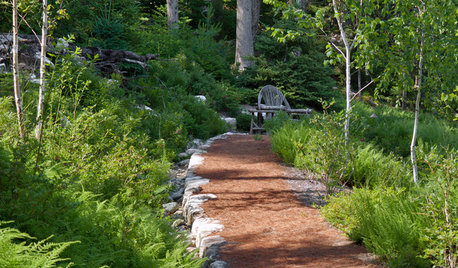Lawn Help...Weed Identification
bentleyvt
11 years ago
Related Stories

EDIBLE GARDENSNatural Ways to Get Rid of Weeds in Your Garden
Use these techniques to help prevent the spread of weeds and to learn about your soil
Full Story
GARDENING GUIDES5 Ways to Naturally Win the Weed War
Show irksome weeds no mercy with these tricks for combating them sans chemicals
Full Story
GARDENING GUIDES5 Weed-Smothering Ground Covers
Let these landscape plants do the dirty work of choking out weeds while you sit back and enjoy the view
Full Story
GARDENING GUIDESLet's Weed Out 4 Native Plant Myths
Plant wisely for a garden that supports pollinators and requires less work
Full Story
GARDENING GUIDESGreat Design Plant: Bugle Weed, a Quick Ground Cover
It’s highly adaptable, suppresses weeds, reduces erosion and provide weeks of bright flowers. Just watch for invasiveness
Full Story
GARDENING GUIDESWeed War: When and How to Use Chemical Herbicides
Before you spray, arm yourself with knowledge about which weed killers — natural or synthetic — are right for your yard
Full Story
GARDENING GUIDES5 Things to Know About Weeding and Mulching Your Native Garden
What’s the best time to pull weeds? How thick should the mulch be? Here’s the scoop for a healthy landscape
Full Story
GARDENING GUIDESTackle Weeds the Natural Way
Instead of dousing your yard with chemicals to wipe out weeds, let time and nature work their magic via smothering and solarization
Full Story
HOUZZ TOURSHouzz Tour: From Overgrown Weeds to Picturesque Farmhouse Expanse
This once-neglected 100-acre South Carolina site now features a lake, a wood-filled farmhouse and a far-reaching view
Full Story
EARTH DAYThe Case for Losing the Traditional Lawn
Work less, help the environment and foster connections by just saying no to typical turf
Full StorySponsored
Most Skilled Home Improvement Specialists in Franklin County
More Discussions







ZoysiaSod
ZoysiaSod
Related Professionals
Arlington Landscape Architects & Landscape Designers · Parole Landscape Architects & Landscape Designers · Clermont Landscape Contractors · Elgin Landscape Contractors · Anderson Landscape Contractors · Amesbury Landscape Contractors · Athens Landscape Contractors · Brookfield Landscape Contractors · Hoover Landscape Contractors · Lorain Landscape Contractors · Melrose Landscape Contractors · Paso Robles Landscape Contractors · Pikesville Landscape Contractors · Rochester Landscape Contractors · Teaneck Landscape Contractorsdchall_san_antonio
bentleyvtOriginal Author
goren